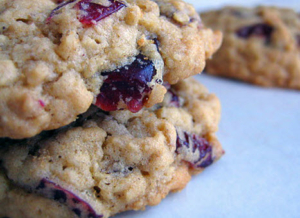Fall Prevention – Personal Risk Prevention
 In the previous Maturity Matters Newsletter, we discussed how to reduce the potential of a fall by attending to the environmental risk factors looming inside and outside of your home. In this edition, we will introduce the biological influences and lifestyle changes you can make to remain safe in later years.
In the previous Maturity Matters Newsletter, we discussed how to reduce the potential of a fall by attending to the environmental risk factors looming inside and outside of your home. In this edition, we will introduce the biological influences and lifestyle changes you can make to remain safe in later years.
While the impact and consequences of falls are significant – it is important to realize that falls are not inevitable! There is much we can do to mitigate the risks and add to our longevity and well-being.
Biological Factors
These refer to factors relating to overall aging, as well as the effects of chronic conditions, acute health challenges, medications and their interactions, end of life issues, and gender differences.
TIPS
- Review your medications and supplements with your health practitioner on a regular basis.
- Consult with your health practitioner to manage conditions that could cause dizziness.
- Manage your blood pressure and pay attention to the potential for postural hypotension that can cause a sudden drop in blood pressure when standing up and transferring.
- Have your eyes and hearing tested annually.
- Visit a podiatrist to keep your feet in good condition.
- Make sure you are taking adequate amounts of vitamin D and calcium.
- Work with a rehabilitation therapist to address balance and gait problems.
- Use proper mobility aids such as walkers and canes, and keep them in good working conditions.
Lifestyle Factors
The good news is that the lifestyle factors are those actions that exist within your control!
TIPS
- Keep as active as you can!
- Exercise (home or group programs) to improve strength, endurance, flexibility and balance.
- Work with a health specialist to develop an exercise program that fits your health status and abilities.
- Add physical activities that you enjoy into your daily routine.
- Drink plenty of water.
- Eat a healthy diet.
- Maintain a healthy weight.
- Quit smoking.
- Limit your alcohol consumption.
- Get enough sleep.
- Wear shoes that fit well with non-slip soles.
- Review our previous edition listing environmental factors to attend to inside and outside of your home.
This edition included some simple tips and strategies to help keep us strong and engaged. The fear of falling can often keep older persons prisoners in their own homes – this doesn’t need to happen! When we reduce the environmental risks, respect and respond to the biological influences, and then introduce positive lifestyle activities, we can continue to live an active, connected and safe existence throughout our lifetime.
Rhonda Latreille, MBA, CPCA
Founder & CEO
Age-Friendly Business®
Oatmeal Choco-Cranberry Cookies
 12 Servings/25 Mins.
12 Servings/25 Mins.
Ingredients-2 very ripe bananas, peeled, 1/2 tsp (2 mL) vanilla extract, 1 cup (250 mL) large flake oats, 2 tbsp (25 mL) ground flax or chia seed, 1/4 tsp (1 mL) ground cinnamon, 3 tbsp (45 mL) mini chocolate chips, 3 tbsp (45 mL) dried cranberries.
Directions-In a bowl, mash bananas until smooth. Stir in vanilla. In another bowl, stir together oats, flax and cinnamon. Stir into banana mixture until well combined. Stir in chocolate chips and cranberries. Scoop dough into 12 mounds onto parchment paper lined baking sheet. Flatten each slightly and bake in 350° F (180° C) oven for about 12 minutes or until cookies are firm to the touch. Let cool before removing from baking sheet.
Nutritional Info Per Serving (1 cookie)-Calories 73, Protein 2 g, Total Fat 2 g, Saturated Fat 1 g, Cholesterol 0 mg, Carbohydrates 13 g, Fibre 2 g, Total sugars 5 g, Added sugars 2 g, Sodium 1 mg, Potassium 120 mg
Recipe developed by Emily Richards, PH Ec. Reprinted with Permission from ©Heart and Stroke Foundation 2012.
Remember to Give
“For it is in giving that we receive.”
St. Francis of Assisi
Happy Holidays from All of Us at
Age-Friendly Business




